Zebra sharks and leopard sharks are two shark species that are often confused due to their distinctively patterned skins and overlapping common names. While they share superficial similarities, closer examination reveals they are very different creatures inhabiting different parts of the world.
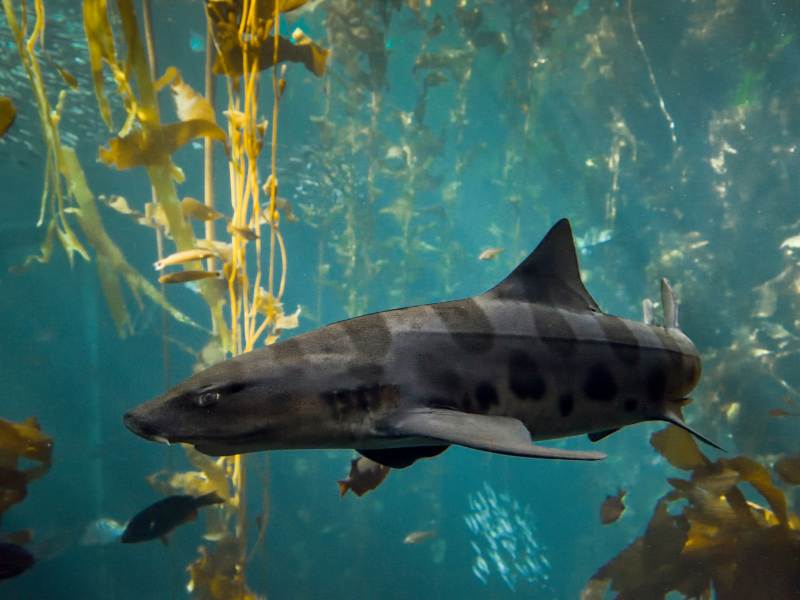
In this article, we will distinguish between these sharks through their scientific identification, geographic ranges, physical attributes, conservation status, and more. By the end, you will be well-equipped to distinguish a zebra shark from a leopard shark.
Common Confusion Due to Names
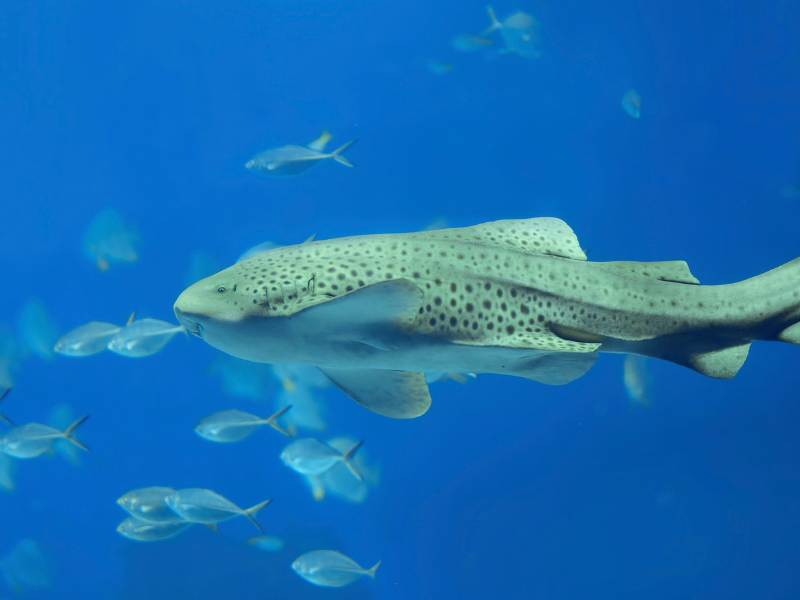
One of the primary reasons zebra sharks and leopard sharks create confusion is the variations in their common names. Zebra sharks are also known as leopard sharks in Australia and parts of Asia like the Andaman Sea. Conversely, leopard sharks are sometimes referred to as zebra sharks in the United States. This overlapping of common names leads to much ambiguity.
Distinct Species Despite Names
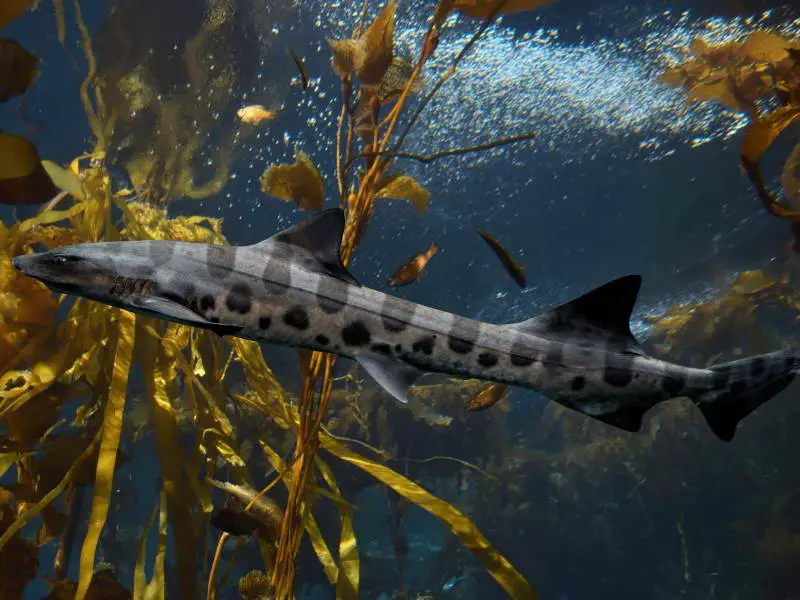
While they may share parts of their common names, zebra sharks and leopard sharks belong to separate species. Zebra sharks’ scientific name is Stegostoma fasciatum, while leopard sharks are identified as Triakis semifasciata. Belonging to different genera itself indicates they are evolutionarily divergent and distinct species in the true sense.
Recognizing Them Scientifically

Let us examine the distinguishing scientific characteristics of these sharks:
Triakis semifasciata (Leopard Shark)
- Slender body with broad fins and tail
- Dark spots and saddle-like markings on the dorsal side
- Found along the Pacific coast of North America
- Size up to 4-5 feet
Stegostoma fasciatum (Zebra Shark)
- Heavy-bodied with vertical stripes when young
- Dark spots on the grey-tan background as adults
- Inhabit tropical regions like Indo-Pacific
- Maximum size of 8 feet
As seen above, their physical forms, markings, and habitats allow clear scientific delineation.
Distinct Geographic Ranges
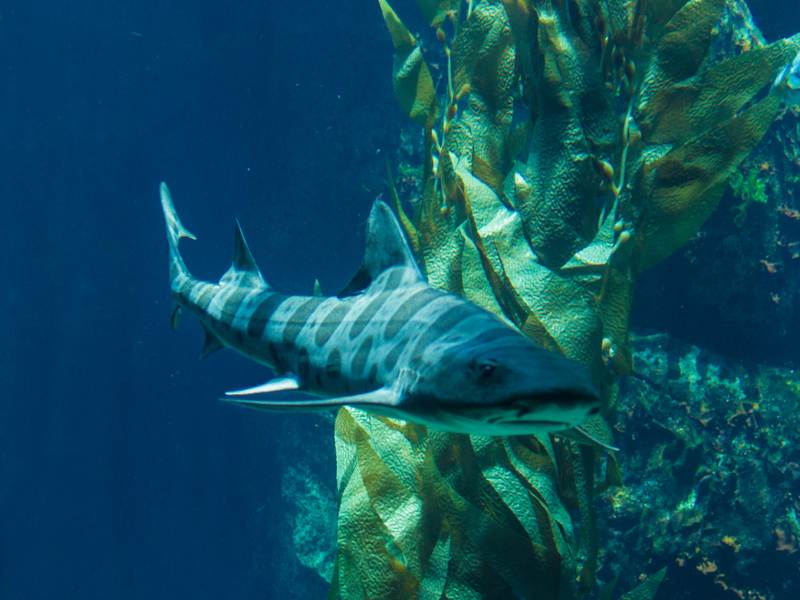
The separate habitats of these sharks provide another key means of identification:
Leopard Shark: North America’s Pacific Coast
Concentrated along the western seaboard of North America, from Oregon down to the Gulf of California. They favor sandy and rocky bottoms of shallow nearshore and estuarine environments here.
Zebra Shark: Tropical Indo-Pacific Regions
Widely spread throughout the tropical waters of the Indo-Pacific, including environments like coral reefs. Major populations exist in Indonesia, the Philippines, and Northern Australia.
Physical Attribute Differences
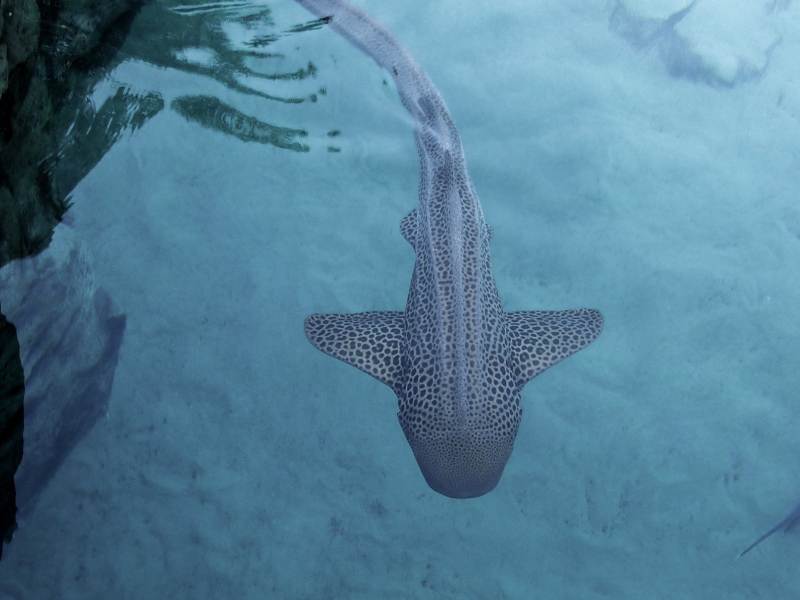
Looking more closely at their physical forms reveals abundant clues to distinguish them:
Leopard Shark Traits
- Slender and streamlined body adapted for swift movement
- Distinctive dark spots and saddles on the dorsal side
- Dorsal fins set far back on the body
Zebra Shark Traits
- Heavy-bodied form suited to a benthic lifestyle
- Vertical dark stripes when young, spots when mature
- Dorsal fins are placed more centrally on the body
These distinct physical attributes correlate well with their separate lineages and habitats.
Conservation Challenges

Both sharks face conservation issues, though to varying degrees:
Leopard Shark: Current Status
Not currently threatened, but populations are vulnerable to habitat degradation and incidental fishing. Strict coastal protections are needed.
Zebra Shark: Endangered Status
The IUCN lists them as endangered due to coral mining, pollution, and targeted fishing causing population declines. Urgent conservation measures are required.
In summary, while superficially similar, closer examination proves zebra sharks and leopard sharks are unambiguously different species that can be distinguished by their scientific names, habitats, physical traits, and varying conservation threats.
Comparing the Key Distinctions
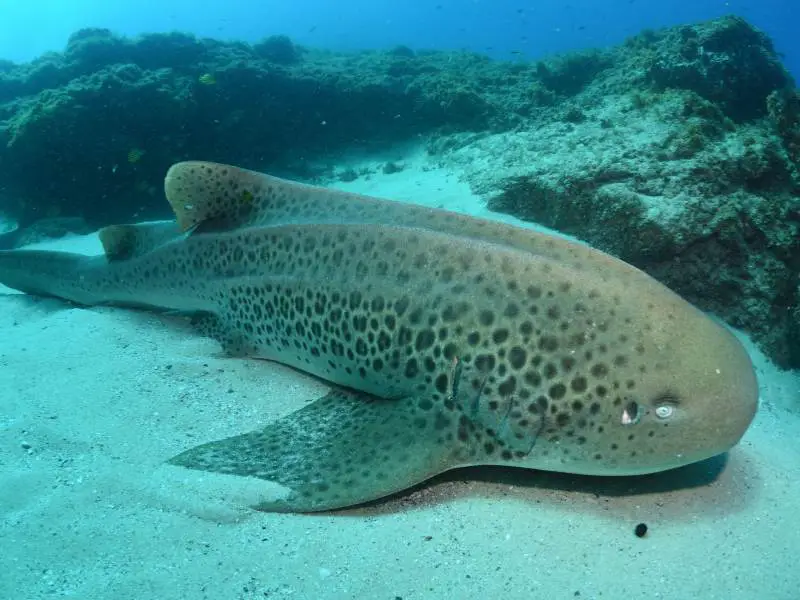
To summarize the distinguishing points between these sharks:
- Scientific Names: Stegostoma fasciatum (Zebra Shark) vs Triakis semifasciata (Leopard Shark)
- Habitats: Tropical Indo-Pacific (Zebra Shark) vs North America’s Pacific Coast (Leopard Shark)
- Physical Form: Heavy-bodied with vertical stripes/spots (Zebra Shark) vs Slender with spots/saddles (Leopard Shark)
- Identifying Marks: Stripes when young, spots when mature (Zebra Shark) vs Distinctive dark spots/saddles (Leopard Shark)
- Conservation Status: Endangered (Zebra Shark) vs Vulnerable but not threatened (Leopard Shark)
Also Read: 10 Interesting Facts About Leopard Sharks
